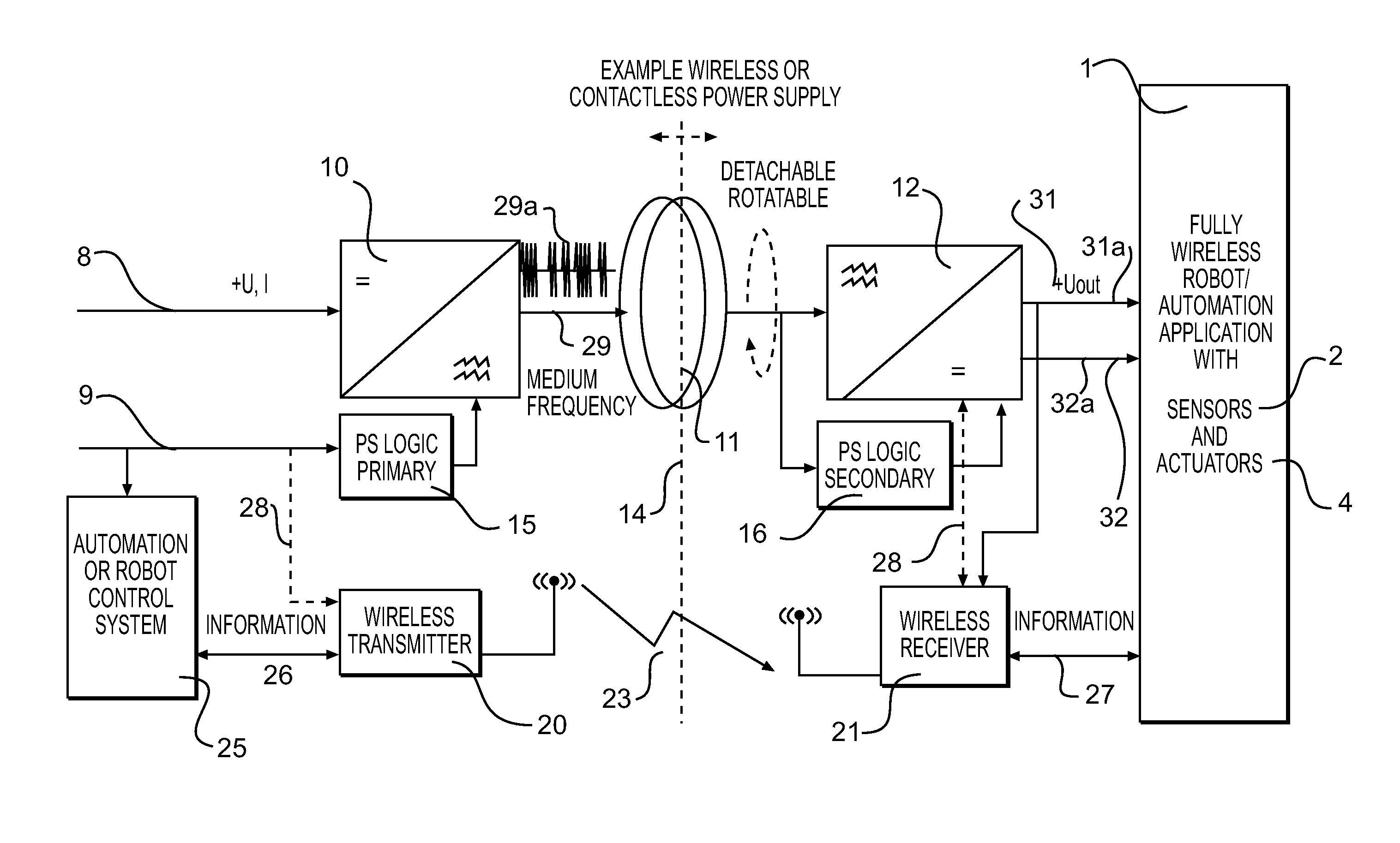Tool for an industrial robot
a robot and industrial technology, applied in the direction of electrical programme control, program control, instruments, etc., can solve the problems of affecting the operation of the robot, requiring process media, and requiring frequent wear and tear of individual cable parts of the cabling, so as to speed up the change, quick and simple, and quick
- Summary
- Abstract
- Description
- Claims
- Application Information
AI Technical Summary
Benefits of technology
Problems solved by technology
Method used
Image
Examples
Embodiment Construction
[0023]FIG. 1 shows a wireless communication system for automation or robotic automation in an embodiment of the invention in which the power supply is a wireless or contactless power supply system using e.g. magnetic or electric coupling through the air. As shown in the figure, the power supply may also be arranged with logic circuits on the sending unit and receiving unit, by which it can communicate over the power supply in a secure way. This is advantageous but the invention may also be practiced using a contactless power supply that does not include overlaid signals.
[0024]The power supply system 10 according to FIG. 1 comprises a primary part 10 and a secondary part 12. The primary part is attached to the industrial robot or other automation arrangement and the secondary part is attached to the tool. FIG. 1 shows an example of a tool or other robot application 1 that comprises one or more actuators 2 and sensors 4 (not shown in detail in FIG. 1). A contactless power supply 10 is...
PUM
| Property | Measurement | Unit |
|---|---|---|
| frequency | aaaaa | aaaaa |
| frequency | aaaaa | aaaaa |
| frequencies | aaaaa | aaaaa |
Abstract
Description
Claims
Application Information
 Login to View More
Login to View More - R&D
- Intellectual Property
- Life Sciences
- Materials
- Tech Scout
- Unparalleled Data Quality
- Higher Quality Content
- 60% Fewer Hallucinations
Browse by: Latest US Patents, China's latest patents, Technical Efficacy Thesaurus, Application Domain, Technology Topic, Popular Technical Reports.
© 2025 PatSnap. All rights reserved.Legal|Privacy policy|Modern Slavery Act Transparency Statement|Sitemap|About US| Contact US: help@patsnap.com



